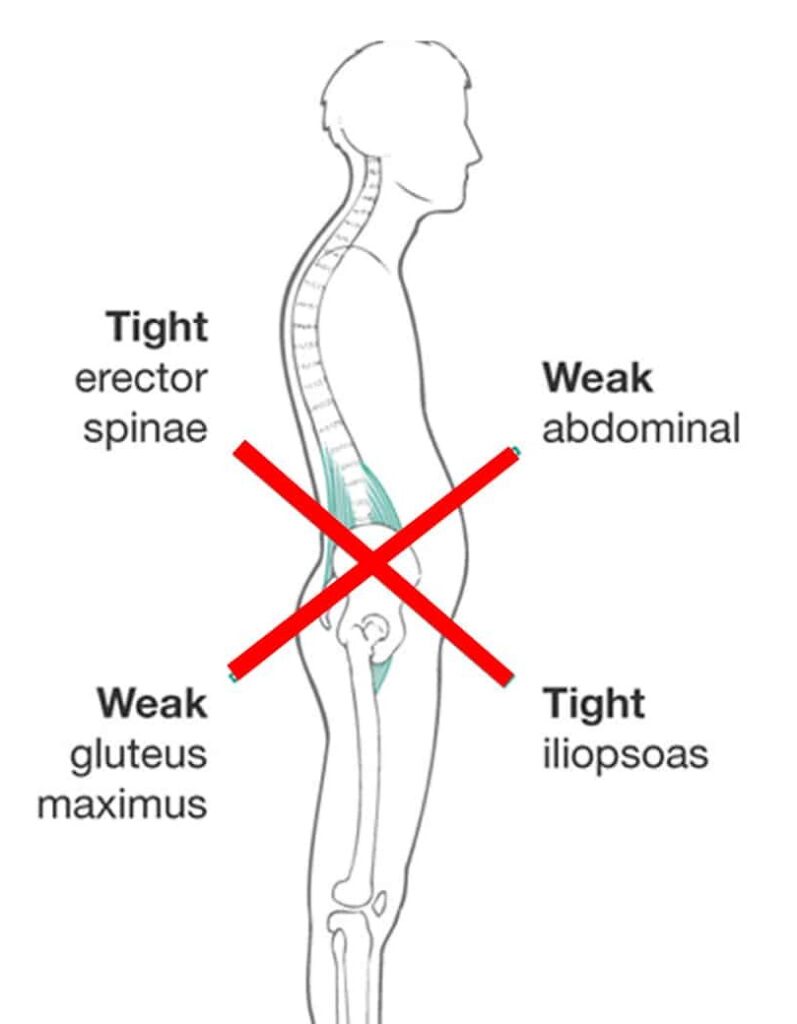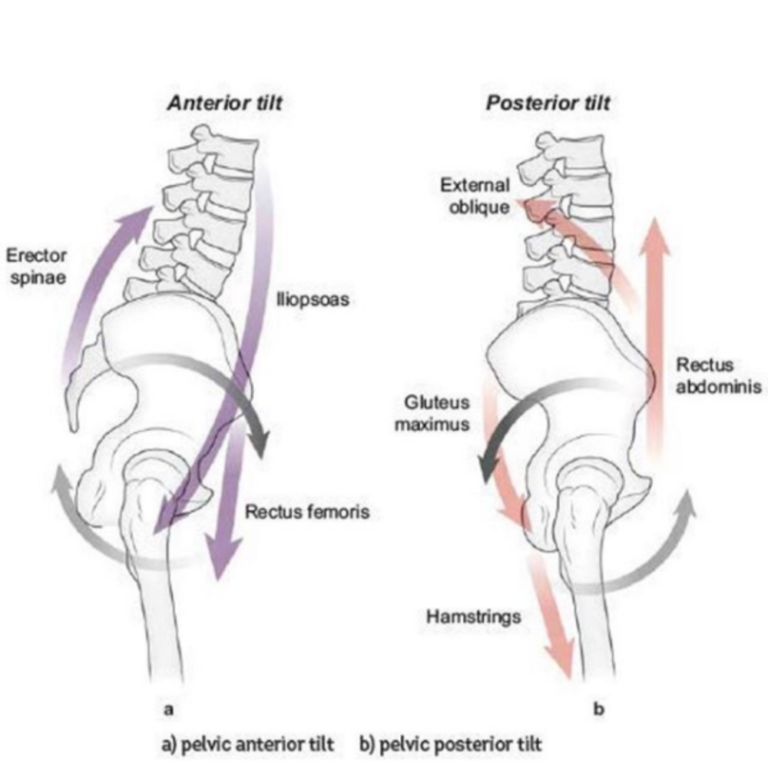Lower crossed syndrome is a common source of back pain. It arises from an imbalance in our muscle structure and it is often the result of poor posture. This condition occurs when muscles surrounding your pelvis are either shortened or lengthened and directly impact how the others are positioned. It leads to anterior pelvic tilt and a host of other postural changes.
First, we need to create a visual so that you can better understand how this works. You need to divide yourself into four quadrants when looking from the side. Your belt/pants/hip line divides you in half by top/bottom and a line drawn from your head to your feet splits you into a front/back section. The four quadrants include your low back muscles (one) and your glute muscles (two) on the back side and your abdominal muscles (three), your hip flexors (four), and a quad muscle (four) on the front side.

We will start by looking at the front half first. Most people tend to be a little weaker in their core and abdominal muscles then they would like to be. These muscles travel down and attach onto your pelvis, which will tilt forwards when your abs are weak. Looking at your bottom half, your hip flexors are often too tight or hypertonic (increased tone) and attach to your spine from below. Your hip flexors will pull the front of your spine down when they are too tight/hypertonic and your weak abs aren’t strong enough to combat against this. Additionally, one of your quad muscles attaches to the front of your pelvis and that will also pull down the front of your pelvis as well. Many of us spend too much of our time sitting during the day and that is one way that your hip flexors and quad muscles can get too tight. They can also get hypertonic if they are too weak and your body is signaling for them to increase their tension.
Next up, we will look at the back quadrants. Your low back muscles also tend to be tight and this can be from back pain or as a result of the front muscle imbalance between the abs and hip flexors. The low back muscles attach to the top of your pelvis in the back and they will pull your pelvis up when they are tight. The glutes in your lower rear quadrant also tend to be weak on many people because we spend most of our time sitting down. The glutes attach to the pelvis from below and muscle weakness here causes the pelvis to rotate up/forwards.

These four elements lead to the abnormal posture of anterior pelvic tilt, which then causes symptoms to your low back. The most important thing to do in this case is to address these muscle imbalances to get better pelvic alignment. You’ll want to target all four quadrants in this system or else you won’t fully protect your back.

